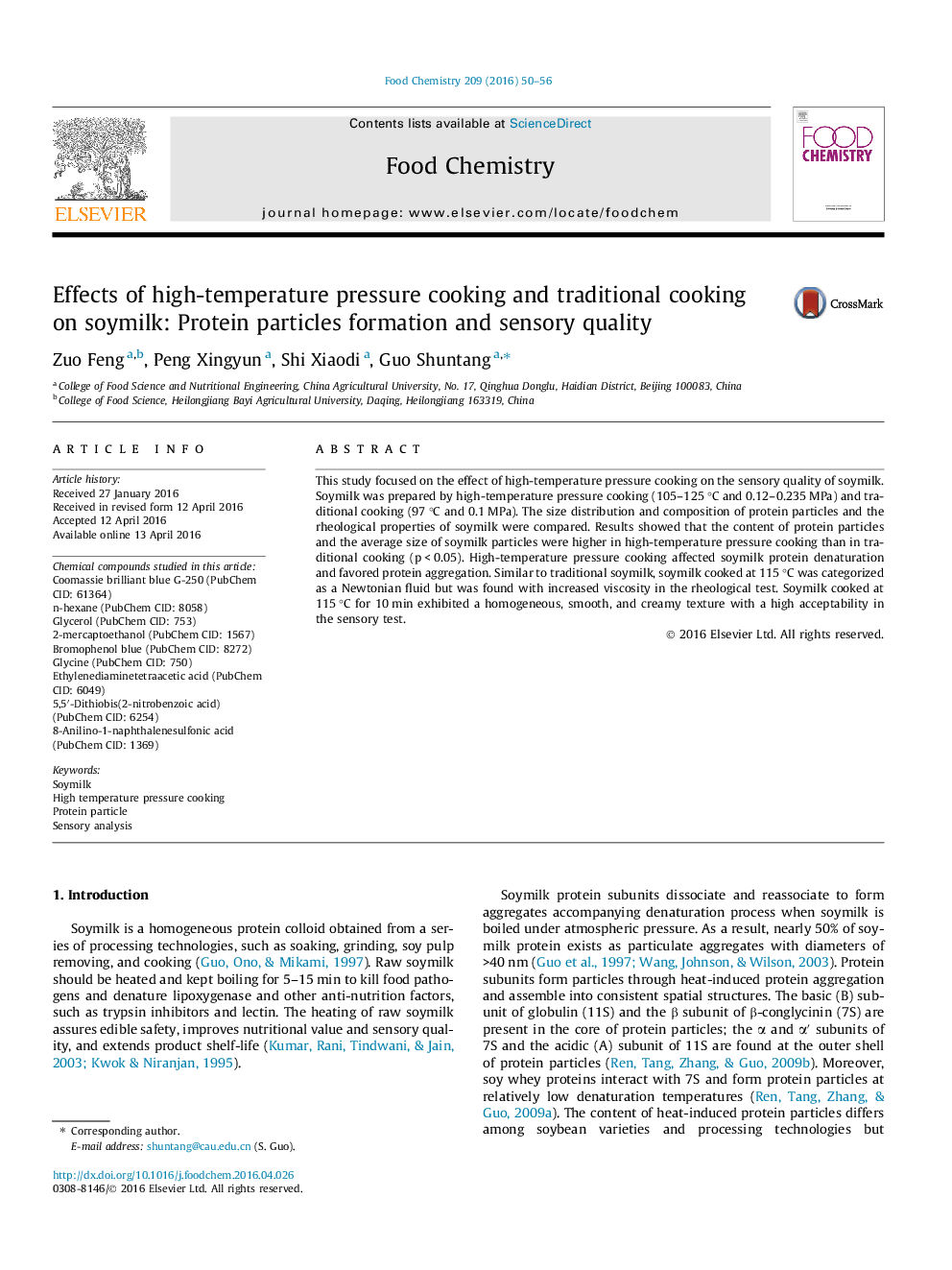| Article ID | Journal | Published Year | Pages | File Type |
|---|---|---|---|---|
| 1183122 | Food Chemistry | 2016 | 7 Pages |
•High-temperature pressure cooking favored soymilk protein aggregation.•High-temperature pressure cooking increased the content of soymilk particles.•The viscosity of soymilk was increased by High-temperature pressure cooking.•High-temperature pressure cooking improved the sensory quality of soymilk.
This study focused on the effect of high-temperature pressure cooking on the sensory quality of soymilk. Soymilk was prepared by high-temperature pressure cooking (105–125 °C and 0.12–0.235 MPa) and traditional cooking (97 °C and 0.1 MPa). The size distribution and composition of protein particles and the rheological properties of soymilk were compared. Results showed that the content of protein particles and the average size of soymilk particles were higher in high-temperature pressure cooking than in traditional cooking (p < 0.05). High-temperature pressure cooking affected soymilk protein denaturation and favored protein aggregation. Similar to traditional soymilk, soymilk cooked at 115 °C was categorized as a Newtonian fluid but was found with increased viscosity in the rheological test. Soymilk cooked at 115 °C for 10 min exhibited a homogeneous, smooth, and creamy texture with a high acceptability in the sensory test.
